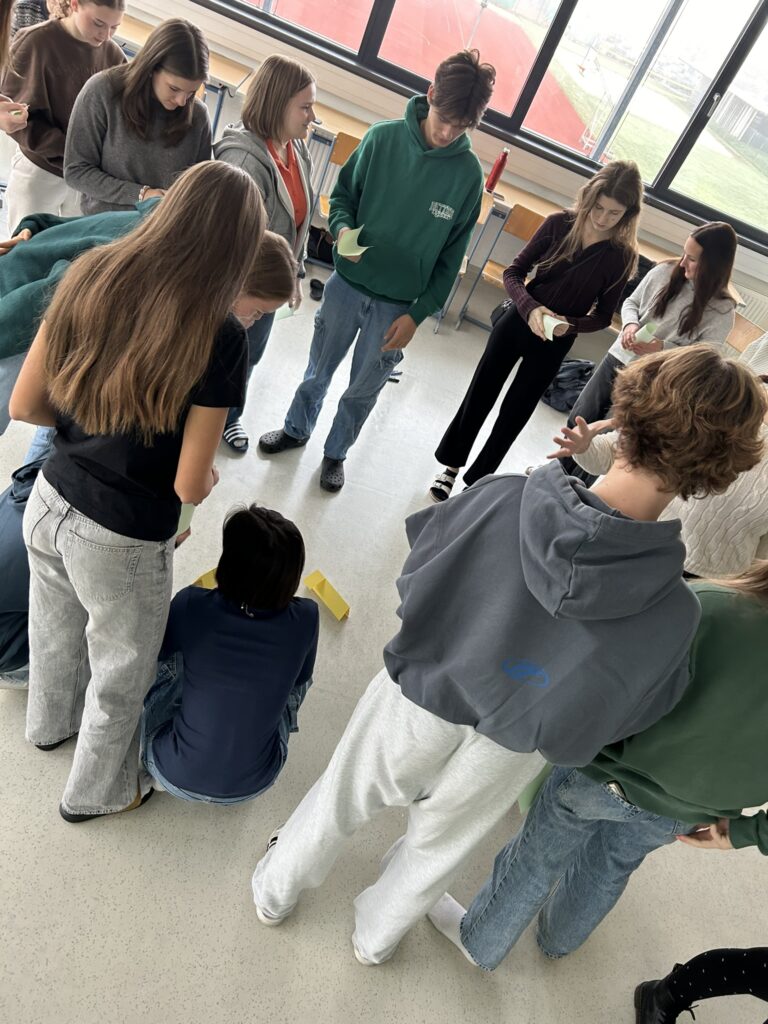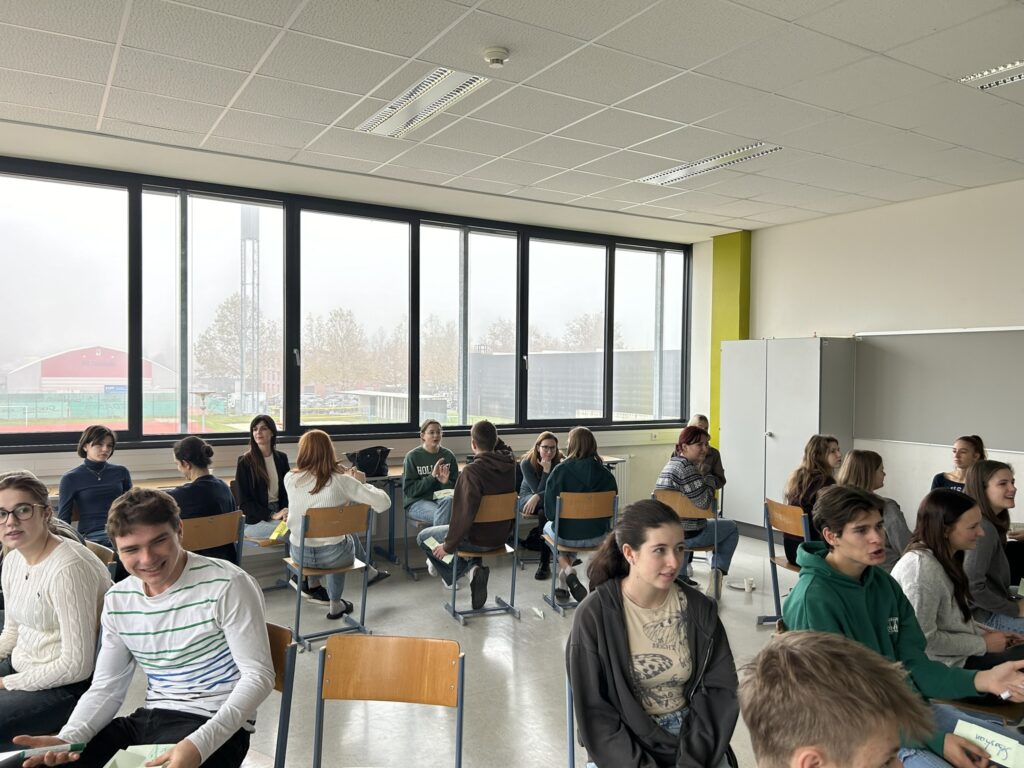On November 19, the first workshop of our MatheConnect project took place, and this time we delved deep into the exciting world of Critical Mathematics Education.
We started the day with an interactive get-to-know-you phase, where we discovered the strengths and interests of the participating students. This foundation was important to us in order to create a space for productive collaboration and creative ideas.
Introduction to Critical Math: The garbage example
As an introduction to the topic of “Critical Math”, we analyzed how waste disposal fees could be distributed fairly in a residential building. What factors play a role here? Household size, waste volume or perhaps income? The students worked independently to come up with creative solutions and also tried to incorporate social aspects. Finally, the group discussed which solutions seemed fair and why.
Relevant tasks with a social focus
The students then worked on three tasks derived directly from the topics they had suggested at the kick-off workshop:
The austrian tax system
How does the austrian tax system work and how can we analyze it using mathematical models? The students not only investigated how progressive tax rates work, but also how changes to individual tax areas would affect the overall system if alternative models were introduced. One current topic that was addressed was the so-called “cold progression”. Here, we discussed what impact this has on the tax burden of the population and what reform proposals are being considered in practice.
Risk changes in the healthcare sector
What does it mean if the risk increases by “100 percent”? The students looked at the difference between absolute and relative risk changes in newspaper articles. It was particularly exciting to analyze how these figures are used in the media to reinforce messages.
Mathematics in sports
The sports area offered exciting discussions that showed the students the diversity of mathematical questions:
Scoring in ice hockey: The students compared how different countries organize their scoring systems and what effects these systems have on the course of the game and the strategies of the teams. What happens when a win brings more points than a draw? How do the dynamics of a game change when bonus points are awarded for extra time?
Medal table at the Olympics: This was about how different countries present their successes. Some focus on the total number of medals, others give more weight to gold medals. We discussed alternative methods, such as a presentation that puts medals in relation to population size. It was also exciting to analyze newspaper headlines, some of which take up these approaches in a striking way, and what messages they convey. The students developed their own ideas for fairer ways of presentation that incorporate different perspectives.
Mathematics with an open outcome
A key aspect of the workshop was that there is not always a “right” or “wrong” answer to these tasks. Rather, they provided space for discussion and the development of their own solutions. The students learned that mathematics provides tools for questioning complex social issues.
The workshop showed impressively how mathematics can build bridges - between numbers, real issues and the people they affect. The discussions were lively, the solutions diverse and we are proud to accompany the students on this journey.
The positive feedback was particularly nice: many students were surprised at how exciting the tasks were. One student put it in a nutshell:
I think the tasks were very cool. So nice, yes cool, I don't know how to put it better.
We are looking forward to the next workshop and are excited to see what new ideas and perspectives will emerge!



